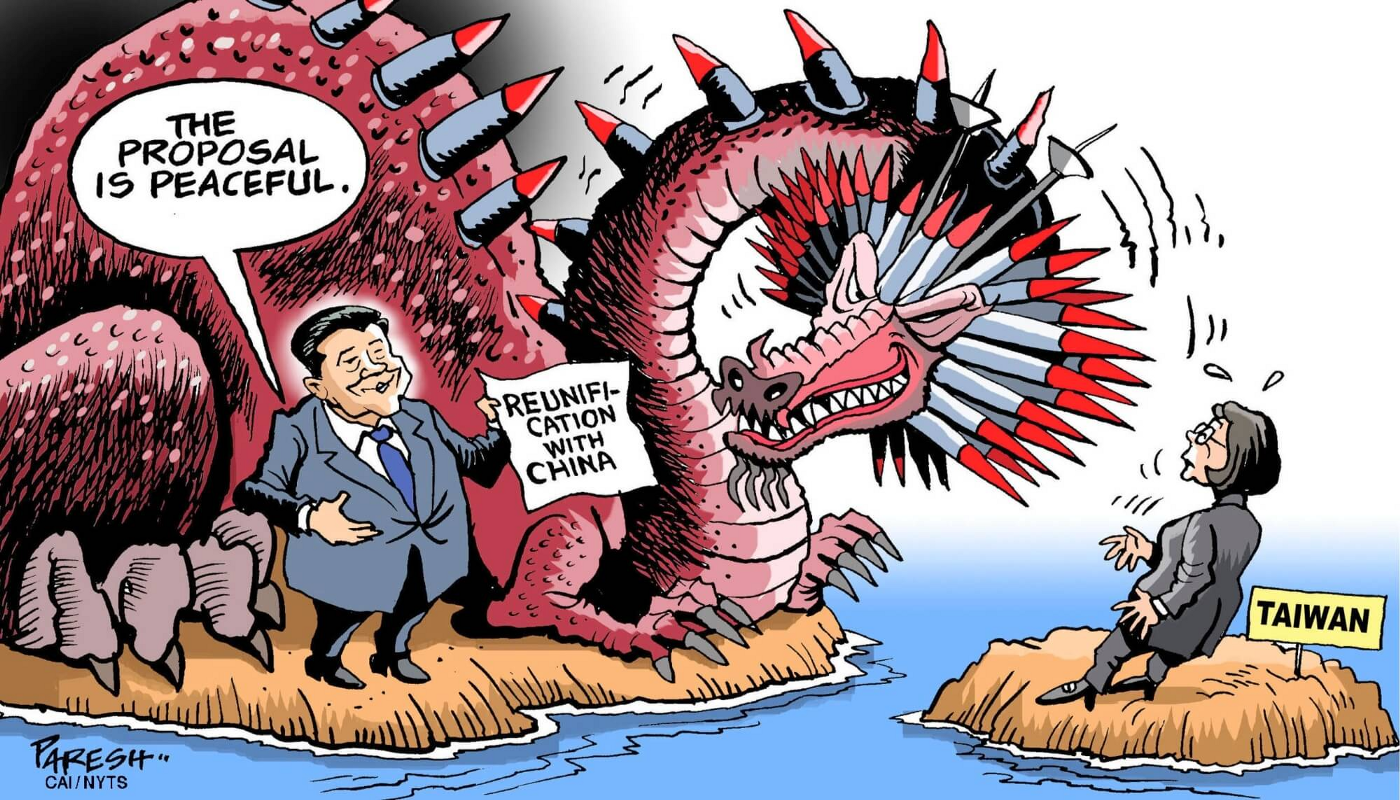
Looking up Israel’s most important news site some time ago, the first thing I saw was a story about a five-year old (not the one shown in the picture of course, who appears to be flying, on his own, from X to Y). Apparently he had brought a “sharp kitchen knife” to kindergarten and threatened to “kill all the girls” by “some kind of magic.” Not a word about the most important question, i.e why; perhaps it is simply too early. Since it is doubtful whether a five year old is able to explain himself in a coherent way about such a matter, let alone escape what adults tell him or her about him or herself, we are unlikely to know in the future either.
The original, Hebrew-language, story may be found at https://www.ynet.co.il/news/article/Hkwujg5Uu. Let teachers, social workers, child psychologists, child psychiatrists, education officials, police officers, lawyers, and other good people whose job includes keeping the young in line worry about the case. For many of them it has the advantage that it will keep their hands busy and the cash flowing for some time to come. Until they come up with their learned conclusions, though, I want to say a few words about some other things that are surely going to happen if feminists pursue their “war against boys,” as one well-known female American writer has called it.
- Much to the joy of the AF clinics and the adoption agencies, more women are going to postpone having their first child until they are over 35 years old.
- Fewer and fewer children, both male and female, are going to have full-time mothers to look after them; the age at which they are entrusted to “professionals” (most of whom are female, and thus by definition unable to serve a role models for boys beyond a certain age) is going to go down and down.
- Divorce, that plague of modern social life, has long been initiated mainly by women. Now it looks as if it is going to increase even further. As a result, fewer and fewer children will grow up with both their natural parents living together in a more or less harmonious way.
- Society is going to define more and more forms of contact between the sexes, as “harassment,” “abuse,” and “rape,” thus causing the number of such cases to explode. As they do so more and more men are going to fall into the clutches either of the police or of the medical establishment. Either way their lives will be ruined, sometimes before they even got under way.
- Hatred between the sexes, rather than diminishing as women catch up with men and become more like them, will grow and reach levels hitherto unknown.
- More women, both old and young, are going to be killed or injured by their male fellow students, boyfriends, fiancés, husbands, etc. In the process, the age of both perpetrators and victims is going to decline.
- As more and more women pursue careers similar to those of men, the gap in life-expectancy between them and men is going to shrink. In time, it may even disappear altogether.
- As society continues its obsession with “toxic masculinity” and the like, Western values are going to be eroded even more than they already have been. Including equality in front of the law, the right to a fair and open trial, the presumption of innocence, and the requirement that accusers face their attackers and submit to cross examination.
- As resentment among men increases, democracy will grow more precarious and tend to be replaced by some form of authoritarianism. For what it may look like, see Margaret Atwood’s The Handmaid’s Tale (not the TV series, which is totally dumb, but the original book).
- Geopolitically speaking Western countries, the only ones where feminism is taken more or less seriously, are going to decline in comparison with the rest.
Finally, these propositions are testable. Keep the list for five or ten years, and we’ll see.


 When a dictatorship is in trouble, ten to one that it will seek a way out in the form of war. Judging by China’s increasingly bellicose behavior in respect to Taiwan over the last few weeks, its dictatorship—and, yes, a dictatorship it is—ten to one that it is in deep trouble indeed. Consider:
When a dictatorship is in trouble, ten to one that it will seek a way out in the form of war. Judging by China’s increasingly bellicose behavior in respect to Taiwan over the last few weeks, its dictatorship—and, yes, a dictatorship it is—ten to one that it is in deep trouble indeed. Consider:

 In Israel, and by no means only in Israel—see the recent shitstorm around Robert Kelly—the man-hunt is on. Not a day goes by that does not bring new stories about men who sexually harassed, attacked, abused, and, yes, raped. In every single case women, are presented as clueless victims. In every single case, asked to explain why they did not do something—such as slap their alleged attacker or at least get out of his way—the woman claims that he has “enslaved” them, “taken away their souls,” “brainwashed them,” “turned them into robots,” etc.
In Israel, and by no means only in Israel—see the recent shitstorm around Robert Kelly—the man-hunt is on. Not a day goes by that does not bring new stories about men who sexually harassed, attacked, abused, and, yes, raped. In every single case women, are presented as clueless victims. In every single case, asked to explain why they did not do something—such as slap their alleged attacker or at least get out of his way—the woman claims that he has “enslaved” them, “taken away their souls,” “brainwashed them,” “turned them into robots,” etc. Despina Stratigakos, Hitler at Home, Yale University Press, Kindle ed., 2015
Despina Stratigakos, Hitler at Home, Yale University Press, Kindle ed., 2015 History has not been kind to Alexandra Feodorovna. Born in 1872 to a fairly minor (as belle epoque grand dukes go), German grand duke, married (in 1894) to Tsar Nicholas II of Russia, she is often presented as a melancholic, not too bright, woman. One whose chief interests—how dare she—was neither feminism nor any public role she might have played, but religion, her children, embroidery, and singing hymns. One who, it having been discovered that her only son, heir to the throne Alexei, was a hemophiliac, went almost out of her mind trying to look after him and worrying about him. With good reason, for more than once he was on the point of death and more than once he begged his parents to put him out of his misery by killing him. Things were made even worse when she turned to Rasputin, an uncouth, semiliterate, but highly charismatic self-proclaimed holy man from Siberia, for the kind of spiritual aid she so desperately needed but apparently could not find either at court or with her husband.
History has not been kind to Alexandra Feodorovna. Born in 1872 to a fairly minor (as belle epoque grand dukes go), German grand duke, married (in 1894) to Tsar Nicholas II of Russia, she is often presented as a melancholic, not too bright, woman. One whose chief interests—how dare she—was neither feminism nor any public role she might have played, but religion, her children, embroidery, and singing hymns. One who, it having been discovered that her only son, heir to the throne Alexei, was a hemophiliac, went almost out of her mind trying to look after him and worrying about him. With good reason, for more than once he was on the point of death and more than once he begged his parents to put him out of his misery by killing him. Things were made even worse when she turned to Rasputin, an uncouth, semiliterate, but highly charismatic self-proclaimed holy man from Siberia, for the kind of spiritual aid she so desperately needed but apparently could not find either at court or with her husband. Back in 1943, the year in which political scientist Quincy Wright published his monumental A Study of War, he put Japan at the top of his list of aggressive and militaristic nations, ranking it ahead even of Germany. Considering that Hitler was in power and that, during the four decades since 1900, Germany had been widely blamed for having launched not one but two world wars, this fact sheds an interesting light on the way people used to think.
Back in 1943, the year in which political scientist Quincy Wright published his monumental A Study of War, he put Japan at the top of his list of aggressive and militaristic nations, ranking it ahead even of Germany. Considering that Hitler was in power and that, during the four decades since 1900, Germany had been widely blamed for having launched not one but two world wars, this fact sheds an interesting light on the way people used to think. It seems just a few years have passed since the best-selling Harvard psychologist Steven Pinker published two extraordinarily optimistic works, The Better Angels of Our Nature; Why Violence Has Declined (2011) and Enlightenment Now (2018). As the author says, his intention was to show that humanity is marching towards, if not perfection, at any rate a greatly improved existence. Depending on the geographical location and the country in question, fewer wars and fewer people who lose their lives in them. Less crime and less violence. Fewer perinatal deaths among women and infants. Greater control over nature. Better healthcare. Diseases that, once considered incurable, have since been eradicated or are on their way to being so. Growing life expectancy (some visionaries have claimed that the first immortals, people destined to live forever or at least to age 200, are already walking among us). Greatly expanded economic production which, along with developing technology, is pointing towards the eradication of poverty and a future in which everyone, if not rich, will at any rate have enough to eat. More democracy, more justice, more human rights. More and often better education; less superstition, more science. Less slavery, more mobility and more travel. More opportunities. An improved social order that is steadily making the lives of billions brighter, happier, more enjoyable.
It seems just a few years have passed since the best-selling Harvard psychologist Steven Pinker published two extraordinarily optimistic works, The Better Angels of Our Nature; Why Violence Has Declined (2011) and Enlightenment Now (2018). As the author says, his intention was to show that humanity is marching towards, if not perfection, at any rate a greatly improved existence. Depending on the geographical location and the country in question, fewer wars and fewer people who lose their lives in them. Less crime and less violence. Fewer perinatal deaths among women and infants. Greater control over nature. Better healthcare. Diseases that, once considered incurable, have since been eradicated or are on their way to being so. Growing life expectancy (some visionaries have claimed that the first immortals, people destined to live forever or at least to age 200, are already walking among us). Greatly expanded economic production which, along with developing technology, is pointing towards the eradication of poverty and a future in which everyone, if not rich, will at any rate have enough to eat. More democracy, more justice, more human rights. More and often better education; less superstition, more science. Less slavery, more mobility and more travel. More opportunities. An improved social order that is steadily making the lives of billions brighter, happier, more enjoyable.